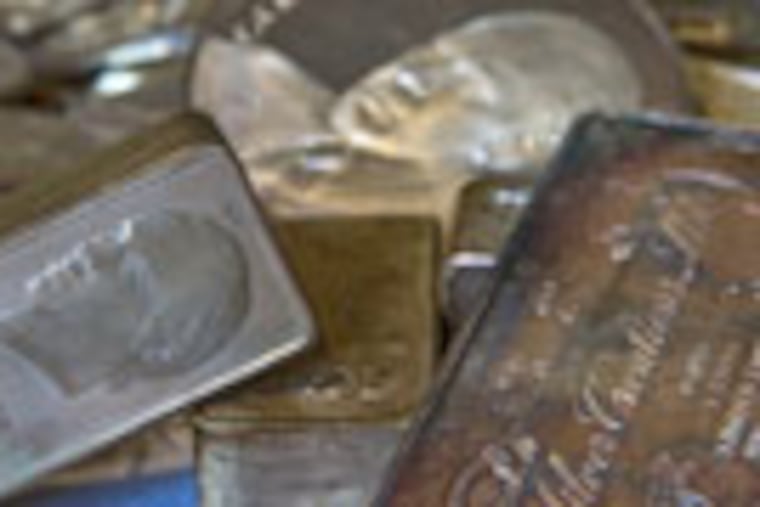Diamonds losing luster in a tough economy
With prices for necessities rising fast and the economy still pointing downward, these are not good times for people selling the ultimate luxury good: diamonds.

With prices for necessities rising fast and the economy still pointing downward, these are not good times for people selling the ultimate luxury good: diamonds.
"When I wake up in the morning, I say, 'Nobody needs what I have,' " said Avi Ezra, who runs Forever Diamonds with a partner on Jeweler's Row in Philadelphia.
"What's more important: a diamond on your finger, or gasoline for your car and food for your home and keeping your home?"
So tilted is the market these days that many retail jewelers are pushing hard the other way - buying from customers, as well as selling. And if the diamond market is any indication of the overall economy, average people with smaller diamonds are struggling far more than the well-heeled with big rocks.
"There is a softening in the market for diamonds under a carat because those people need food and shelter and are not so concerned about buying a diamond right now," said Larry Rosenberg, of the family-owned diamond wholesaler Rosenberg Diamond Co.
So far, however, despite their blaring advertisements and offers of high prices, retailers say people with diamonds are reluctant to sell. "People are attached to their diamonds. They might change the ring, but the diamond remains the same," Ezra said.
Rather than emotionally charged diamonds, it is mostly gold and silver that people look to sell to either jewelers or at trade shows such as those that D&Y Trading Inc., of Bridgeton, N.J., organizes week by week across New Jersey.
At a recent D&Y Trading event in Cherry Hill, Helen Lombardi of Haddonfield said she had scoured her home for jewelry and had received more than $1,500 for broken necklace chains and half of a set of earrings over several weeks.
Theodore Johnson of Pennsauken said he had been collecting coins all of his life. Now 75, with children uninterested in his trove, he went to the Cherry Hill event and received $14 apiece for one-ounce silver ingots for which he had paid "maybe $3 apiece."
"So getting more than four times the value which I paid is a good investment," Johnson said with a smile. He said he would return to sell more of his collection of about 150 ingots.
To Johnson, the higher price for his silver means extra cash to travel, not to pay bills. "My wife and I will travel in the country," he said. "We're getting ready to go to Harpers Ferry and spend three or four days there."
On the other hand, people who might consider selling their smaller diamonds have not generally been lured by the higher prices, jewelers and buyers said.
Even though Rosenberg does not see a lot more people looking to sell their diamonds, he said he did see "more diversity" in the age and race of people coming to sell diamonds.
Bucking the economic climate, consumers of big diamonds are still buying, he said.
"This year, it's the big stones - three carats and larger - that are bringing very strong prices because that's what the rich want," Rosenberg said.
In the last year, only the price of top-quality, clean and white gems have gone up substantially - as much as 10 percent - while prices for other stones rose much less.
"So instead of buying five [small] stones, I'm down to maybe one or two [bigger] stones for the same dollar that I was looking to invest," Rosenberg said.
Richard Gabbey, of V&M Jewelry Inc. on the corner of Eighth and Chestnut Streets, said the sales decline made it particularly important to buy at a lower price.
"If someone comes in off the street, I am more likely to buy at a better price than from a supplier," Gabbey said.
For now, as in past slumps, jewelers are relying on wealthier customers to get them through.
"People would rather have a bag of diamonds than a bag of dollars," Rosenberg said, "because dollars can go up and down and a diamond is accepted worldwide."